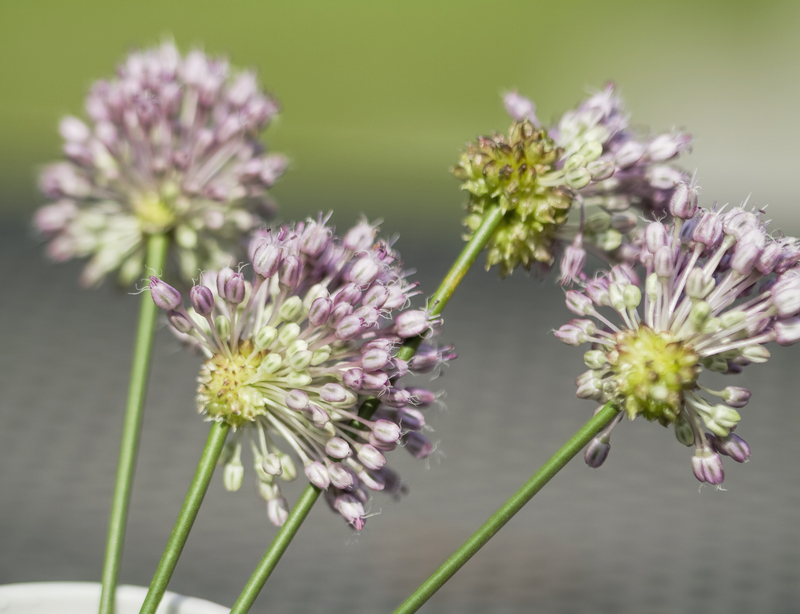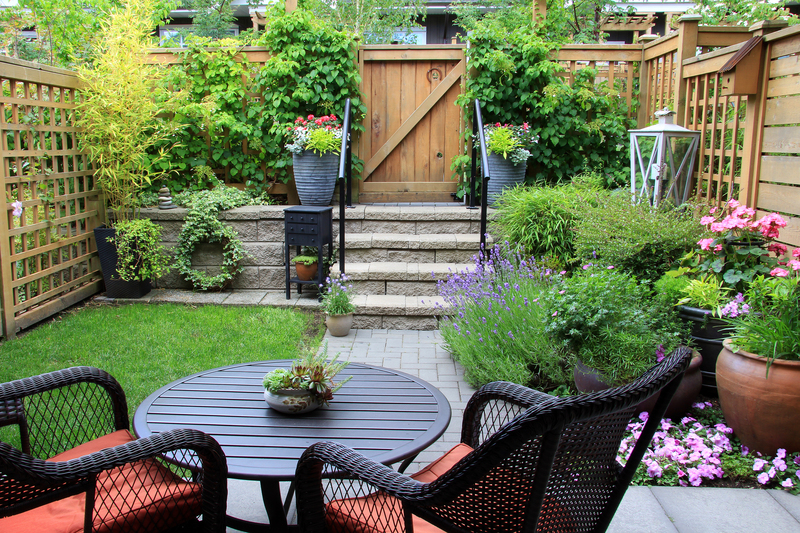Where Transformation Begins: Garden Restoration
Posted on 01/06/2025
Where Transformation Begins: Garden Restoration
There is something truly magical about watching a neglected outdoor space evolve into a vibrant, flourishing sanctuary. Garden restoration is more than just a process--it's a journey that infuses new life into tired landscapes, mending broken elements and rekindling the beauty that once was. Whether driven by a love of nature, the desire to increase property value, or simply the joy of gardening, restoring a garden can be deeply rewarding. In this comprehensive guide, we'll explore where transformation begins, providing essential insights and actionable tips for anyone looking to breathe new life into an old garden.

Understanding Garden Restoration: The Heart of Outdoor Transformation
At its core, garden restoration is about reviving and rejuvenating gardens that have seen better days. This could involve restoring historical landscapes, rehabilitating neglected home gardens, or simply giving your backyard a fresh start. Restoration is a multi-faceted process that may demand substantial planning, creativity, and patience, but the results are always worth it.
Why Restore a Garden?
- Preservation of History: Restoring heritage gardens helps conserve cultural and historical landscapes for future generations.
- Increase Property Value: A well-maintained, beautiful garden can add significant value to your home.
- Environmental Benefits: Reviving green spaces supports local biodiversity, improves soil health, and encourages pollinators.
- Personal Satisfaction: There's immense joy in nurturing plants and transforming a neglected space into something stunning.
- Enhanced Curb Appeal: A restored garden creates a welcoming first impression for guests and passersby.
Planning Your Garden Restoration Project
Every successful garden revival starts with thoughtful planning. Before grabbing your shovel, consider these crucial steps:
1. Evaluate the Current State of Your Garden
Walk through your garden notebook in hand, making observations about:
- Existing trees, shrubs, and perennials that can be saved or pruned.
- Weeds, damaged structures, overgrown areas, and unhealthy soil.
- Sunlight patterns and natural features that could impact plant choices.
2. Set Clear Restoration Goals
Ask yourself: Do you wish to recreate a historically accurate landscape, cultivate a modern garden, or simply reclaim wellness and order from chaos? Setting clear objectives helps inform all future decisions--from design style to plant selection.
3. Create a Restoration Plan
Sketch your vision. Outline new beds, paths, water features, and seating areas. Research suitable plant species, especially those that thrive in your local climate. Consider sustainability practices such as composting, rainwater harvesting, and using native plants to make your garden transformation both beautiful and eco-friendly.
Steps to Transforming Your Outdoor Space
Where transformation begins in garden restoration is with careful, systematic action. Here's a roadmap to breathe life back into any outdoor sanctuary:
Step 1: Clean Up and Clear Out
Remove debris, fallen branches, weeds, and invasive species. Clear out old mulch, diseased plants, and anything else that doesn't contribute positively to the space. This step creates a clean slate for restoration and helps prevent future plant health issues.
Step 2: Assess and Revitalize Soil
Healthy gardens start below the surface. Test your soil for nutrients, pH, and drainage. Amend as needed with compost, well-rotted manure, or organic fertilizers to ensure plants have the resources they need to thrive. Improving soil structure and fertility is foundational to garden transformation.
Step 3: Restore or Replace Key Features
- Hardscape Elements: Fix pathways, edges, retaining walls, and patios. Repair, clean, or replace materials to ensure they are safe and visually appealing.
- Fencing and Boundaries: Mend fences and gates, repaint, or re-stain as needed.
- Structures: Restore sheds, greenhouses, pergolas, or arbors if you have them. Replace broken fixtures, repaint or repair aging wood.
Step 4: Reimagine Planting Schemes
Now comes the fun--selecting the plants that will define your restored garden. Seek to blend old favorites with fresh color and texture. When possible, retain mature trees and established shrubs for structure and shade. Introduce healthy perennials, annuals, bulbs, and groundcovers. Group plants with similar water and light needs to minimize maintenance.
Step 5: Focus on Sustainable Garden Restoration
Transforming your garden doesn't have to harm the environment. Use eco-friendly practices:
- Choose native plant species to support pollinators.
- Mulch beds to reduce water evaporation and control weeds.
- Install rain barrels for sustainable irrigation.
- Compost organic debris on site.
- Consider drip irrigation to save water and promote deep root growth.
Step 6: Add Finishing Touches
Your transformation isn't complete without personal flair! Install garden art, seating, lighting, or water features. These elements provide comfort and invite you to spend more time outdoors, reaping the rewards of your hard work.
The Magic of Historical Garden Restoration
In many regions, historical garden restoration plays a vital role in preserving architectural and horticultural heritage. These projects often involve careful research, cultural respect, and painstaking attention to original design elements. Noteworthy gardens may draw from:
- Victorian or cottage garden styles
- Formal French or Italian designs
- Japanese Zen landscapes
- Traditional kitchen or herb gardens
Garden Restoration: Challenges and Solutions
Every garden transformation project presents unique obstacles. Yet each challenge is an opportunity to learn, adapt, and create something memorable. Common issues include:
- Poor Soil Quality: Address with organic amendments and crop rotation.
- Pest and Disease Management: Employ integrated pest management techniques and select disease-resistant varieties.
- Limited Resources: Phased restoration is perfectly acceptable; tackle projects as time and budget allow.
- Accessibility Concerns: Design wide, smooth paths and raised beds for gardeners of all abilities.
- Water Scarcity: Emphasize drought-tolerant plants and efficient irrigation systems.
Restored Gardens: A Source of Inspiration
The stories behind garden renewal are as diverse as the landscapes themselves. Whether reviving a beloved family garden, collaborating with a community on a public park, or breathing life into urban plots, each project offers inspiration. Before-and-after photos, personal testimonials, and garden tours can motivate others to embark on their own transformations.
Imagine the joy of butterflies returning, the pleasure of harvesting homegrown vegetables, or the tranquility of a sunset stroll through carefully restored flower beds. These are the true rewards of well-executed garden restoration.
Embracing the Future: Sustainable Trends in Garden Transformation
Gardeners today face new challenges, but also enjoy innovative techniques and resources:
- Permaculture: Designing gardens as self-sustaining ecosystems that require minimal intervention.
- Pollinator-Friendly Gardens: Planting diverse flowers to sustain bees, butterflies, and other beneficial insects.
- Rain Gardens: Utilizing depressions and strategic plantings to manage stormwater runoff naturally.
- Edible Landscaping: Blending ornamental and food-producing plants for beauty and utility.
- Smart Garden Technology: Leveraging timers, sensors, and weather data for efficient watering and plant care.
Tips for a Successful Garden Restoration
- Be patient. Restoring a garden is a journey--plants need time to establish, and designs may evolve.
- Document your progress. Take photos and keep a gardening journal to track changes, successes, and lessons learned.
- Work with nature. Embrace wildlife, celebrate volunteers, and let natural processes guide your garden's rebirth.
- Reach out for help. Local horticulture societies, extension services, or professional landscapers can offer invaluable advice and assistance.
- Celebrate milestones. Host a garden party or open your space to friends and family. Share the joy of transformation!

Conclusion: Where Transformation and Beauty Begin
Garden restoration is more than just a makeover. It's the beginning of a transformation that rekindles the spirit of a place, reconnects us to nature, and rewards us with beauty, bounty, and peace. Every restored garden tells a story--a testament to patience, hope, and the belief that, with care and imagination, any outdoor space can be renewed.
If you're ready to embark on your own garden transformation, remember: start small, dream big, and celebrate each step along the way. Let your journey begin where transformation begins--garden restoration.
Frequently Asked Questions about Garden Restoration
-
What is the first step in restoring a neglected garden?
The first step is always a thorough cleanup and honest assessment of existing features, soil, and sunlight conditions. -
How can I revive my garden on a budget?
Start by salvaging existing plants and using repurposed materials for paths and beds. Composting and seed sharing are inexpensive ways to fill your space with new life. -
How do I maintain a restored garden?
Regular weeding, mulching, watering, and seasonal pruning are essential. Don't forget to replenish soil health annually with organic matter! -
Can I restore a historical garden without specialized training?
Yes, but consulting local resources, archives, or experts will ensure authenticity and adherence to historical accuracy. -
What are the benefits of garden restoration for the environment?
Restoring green spaces supports wildlife, improves air and water quality, and contributes to climate resilience by sequestering carbon.
Ready to begin your own garden transformation? Start today and discover where transformation truly begins--through garden restoration!
```
